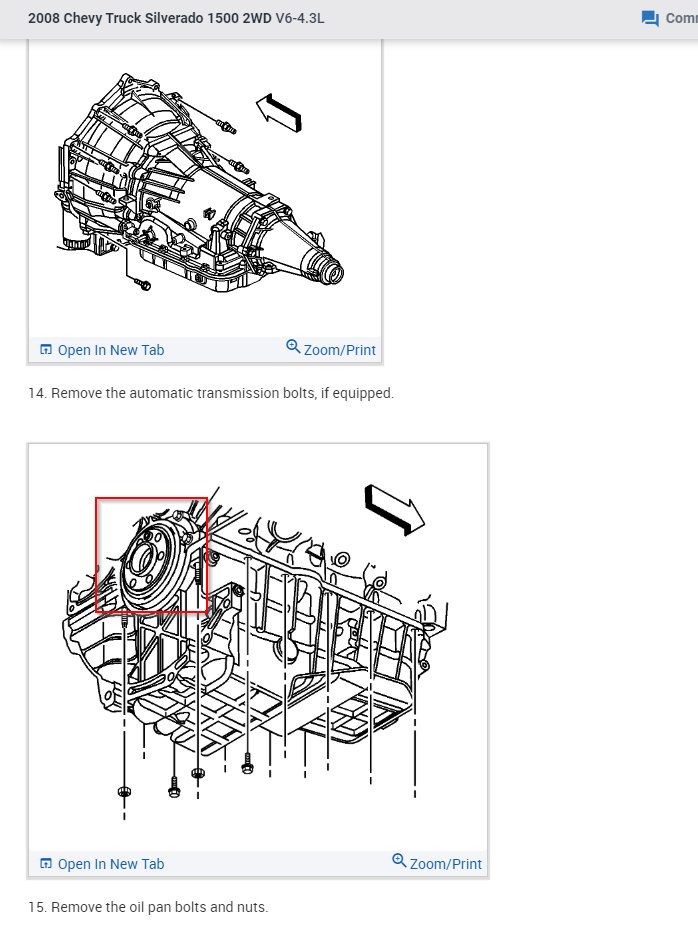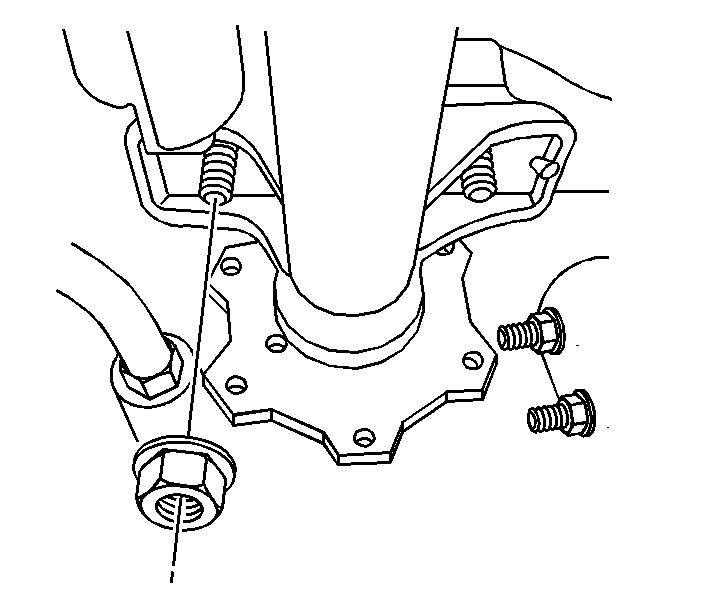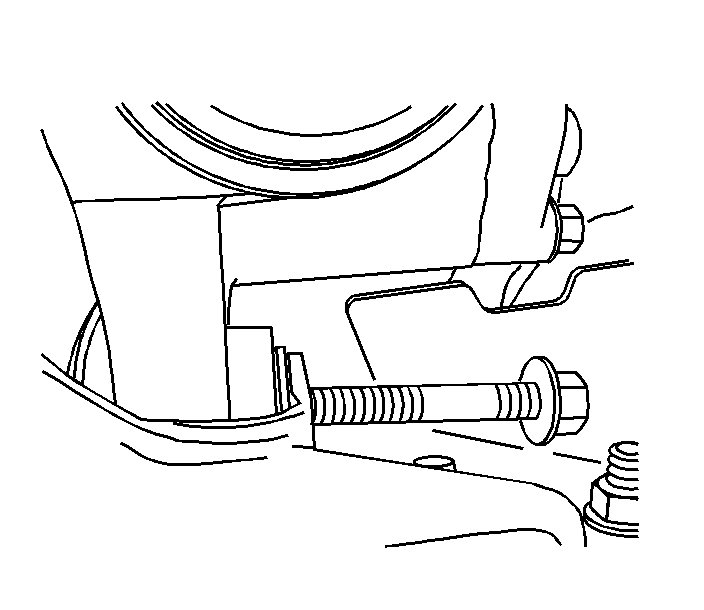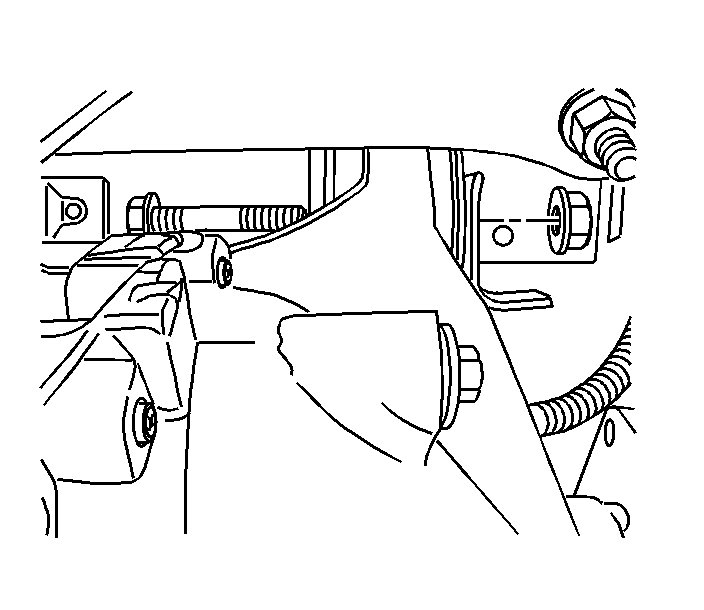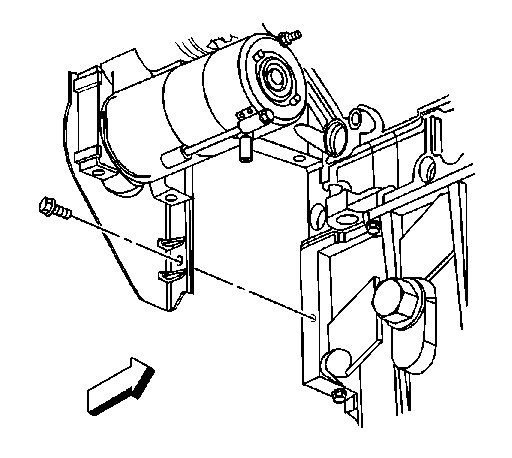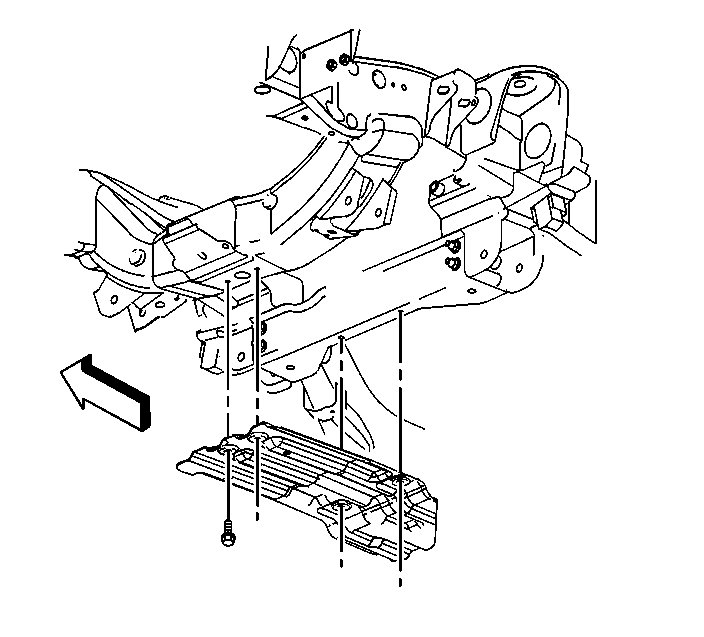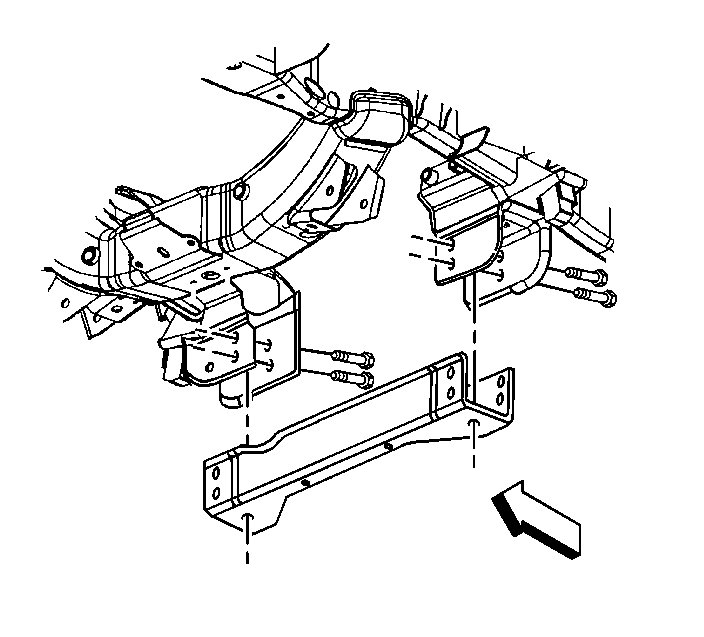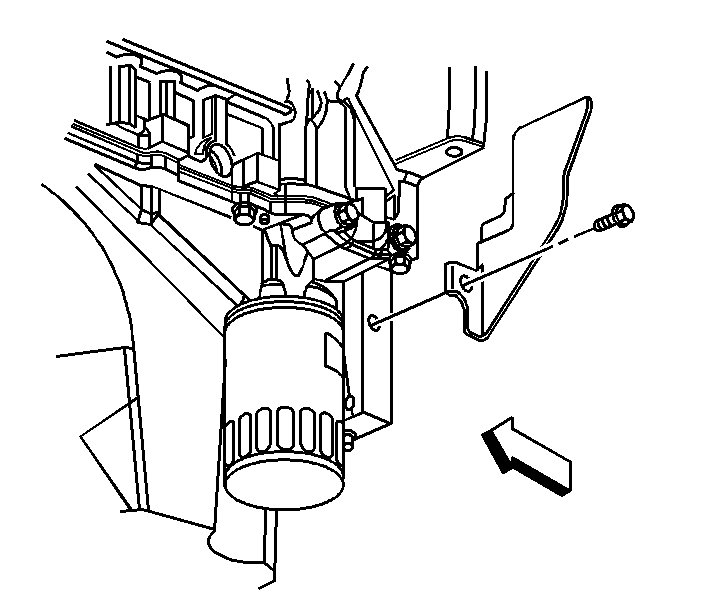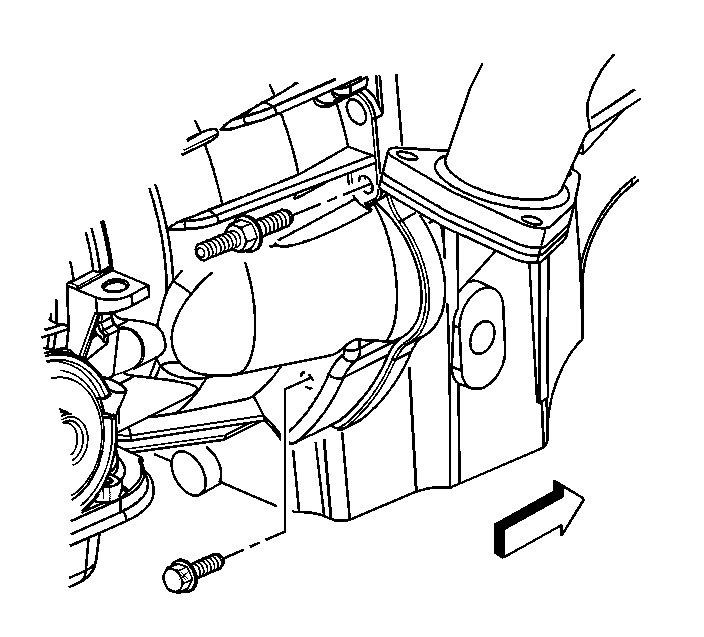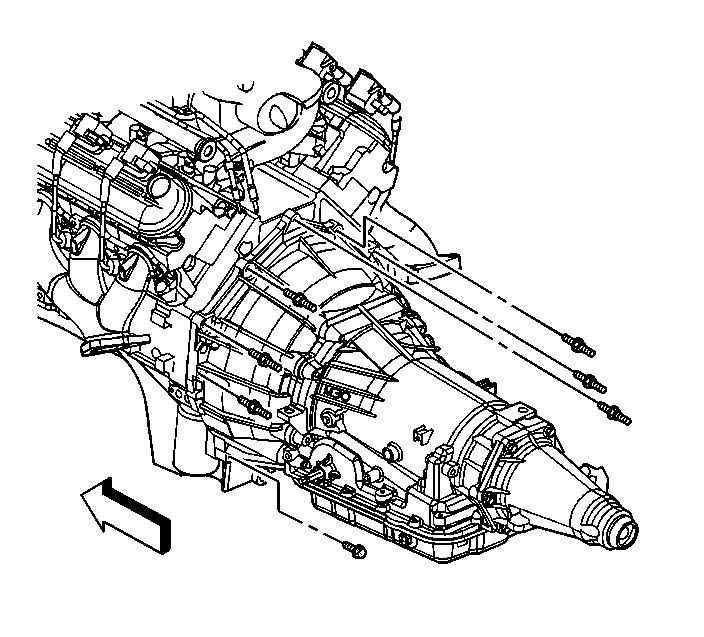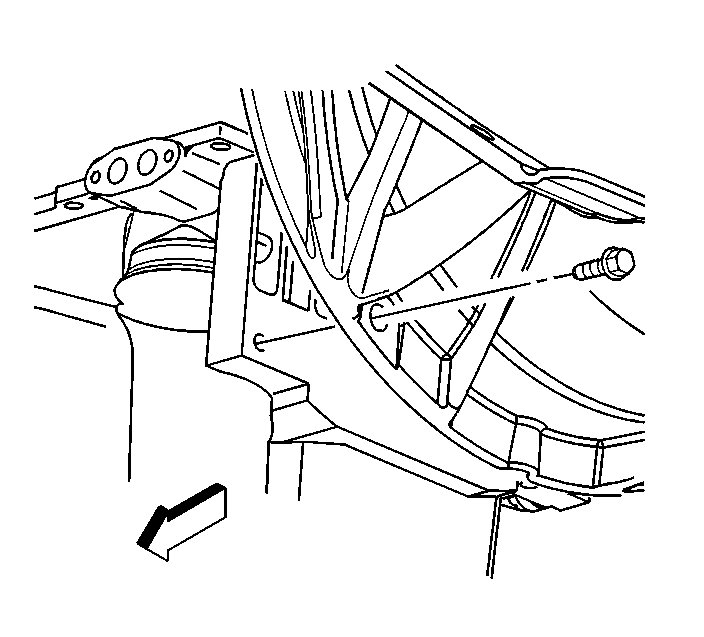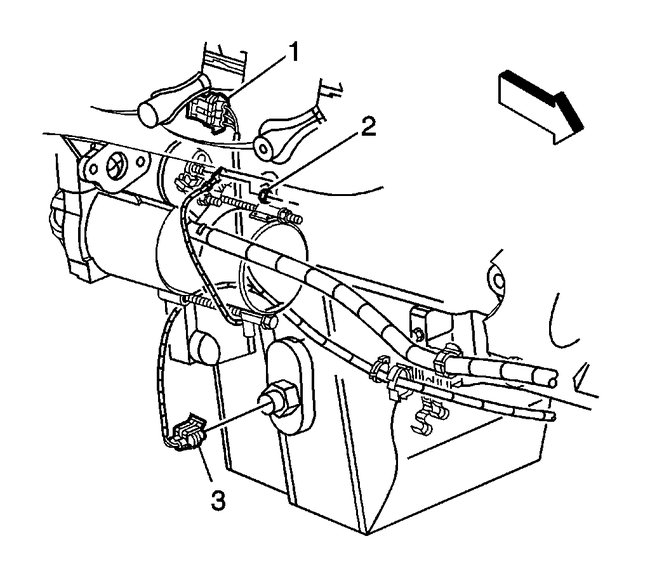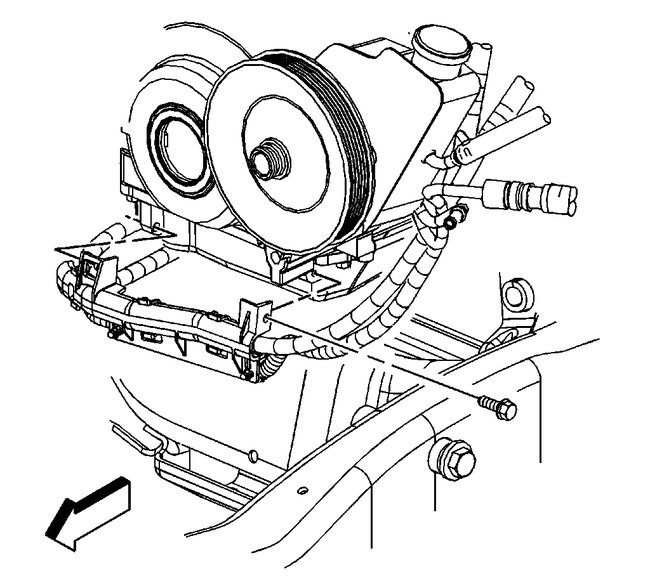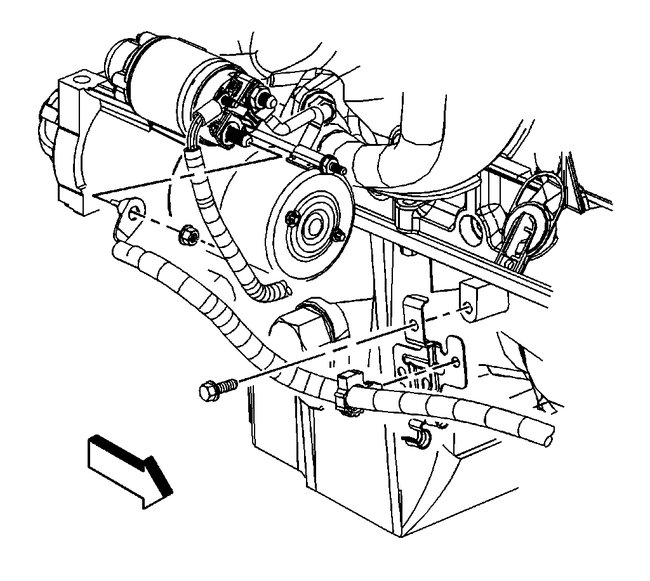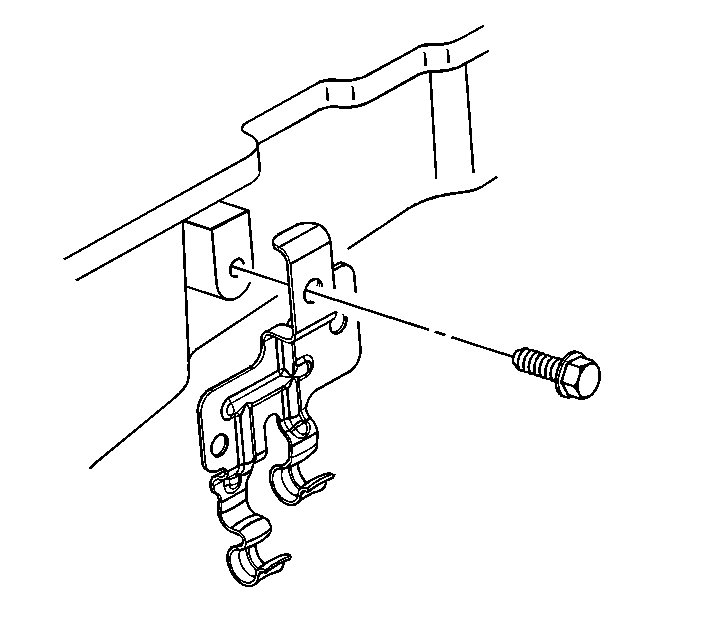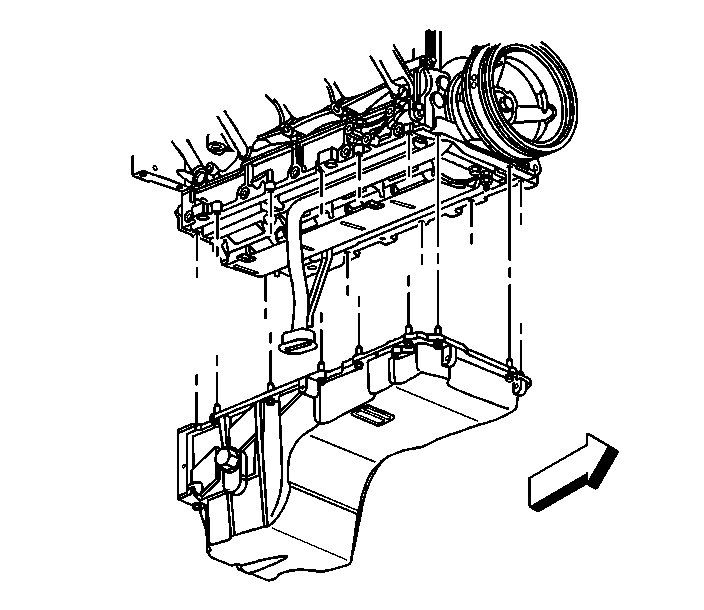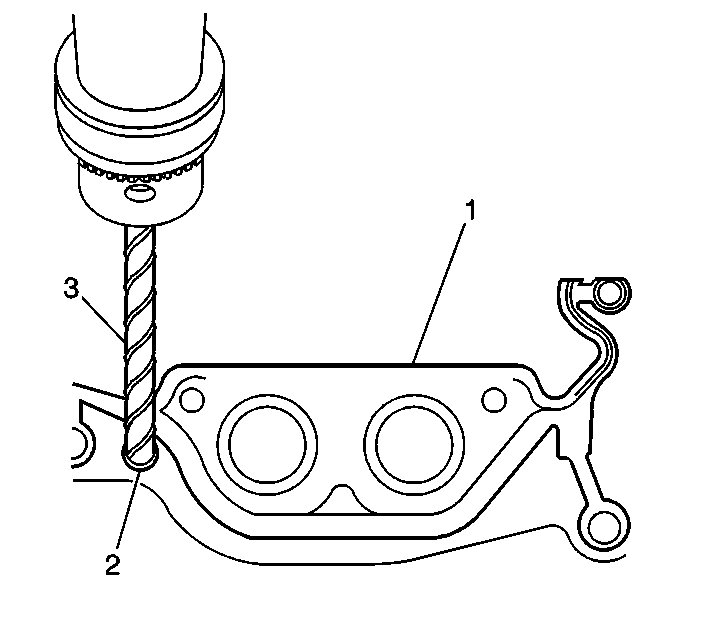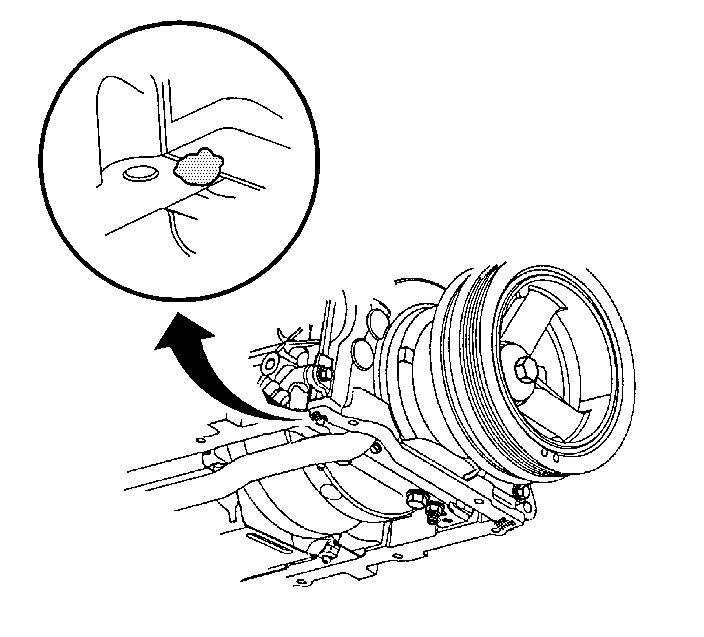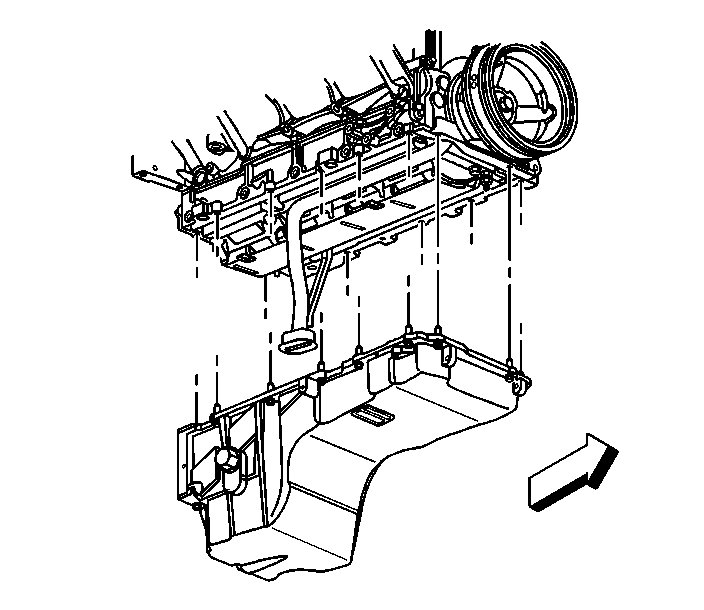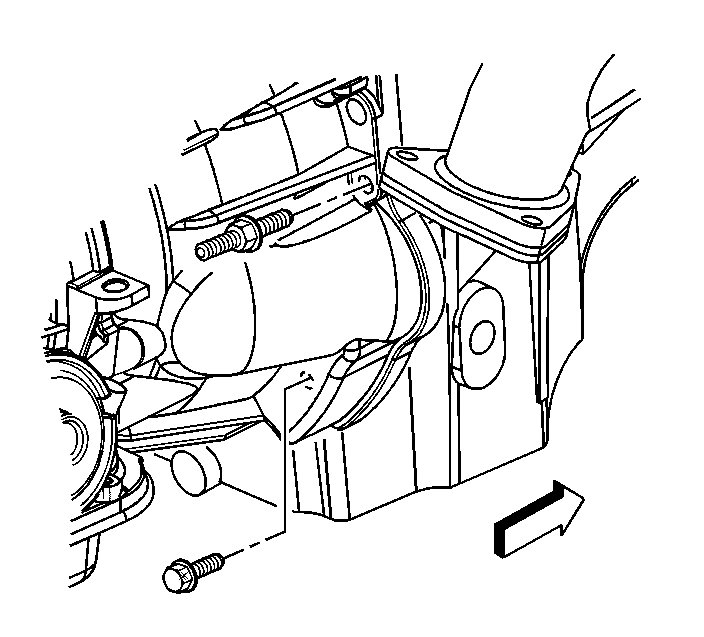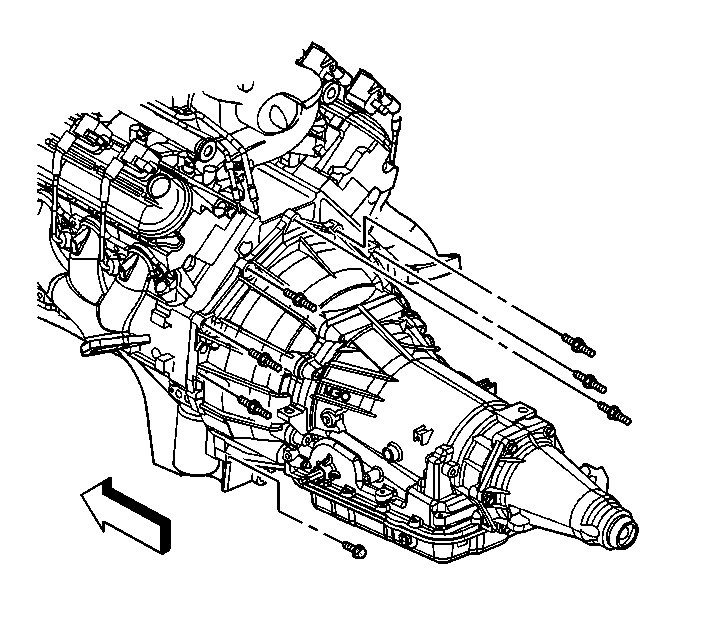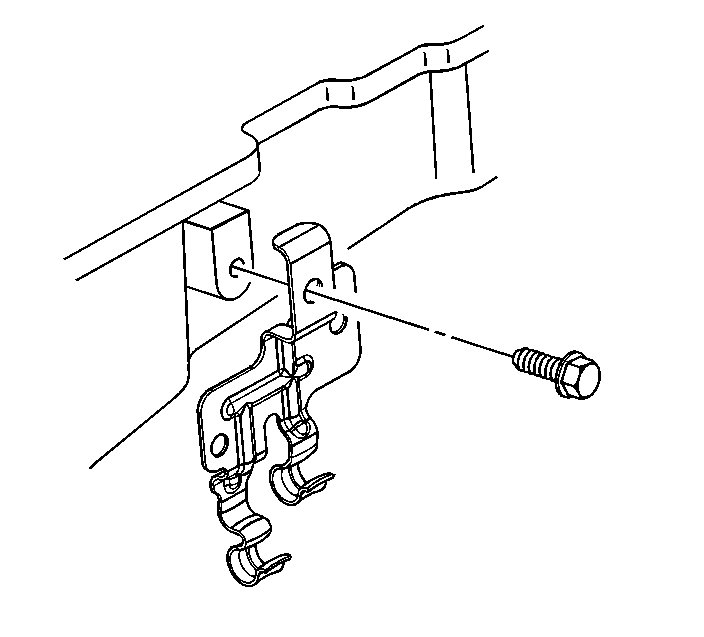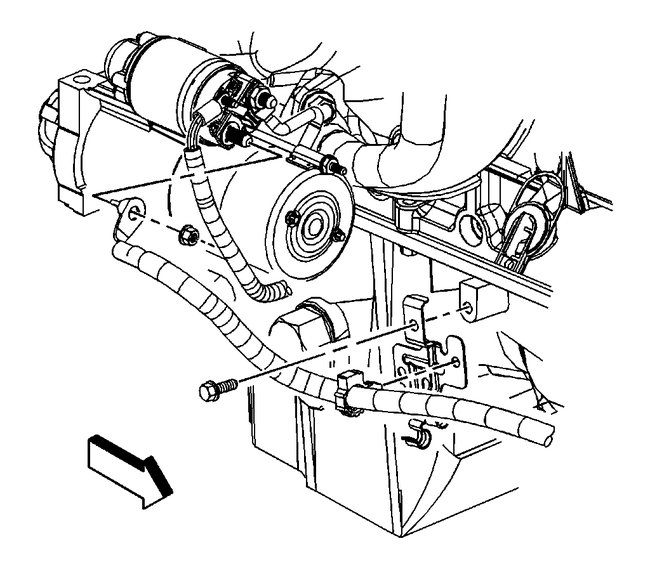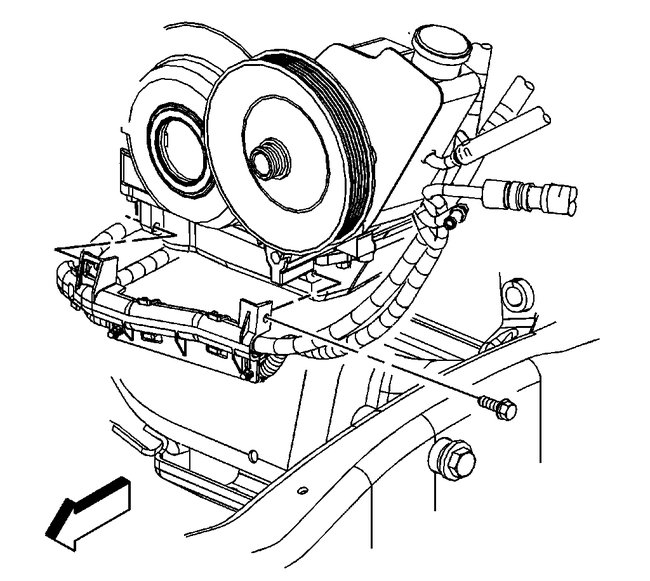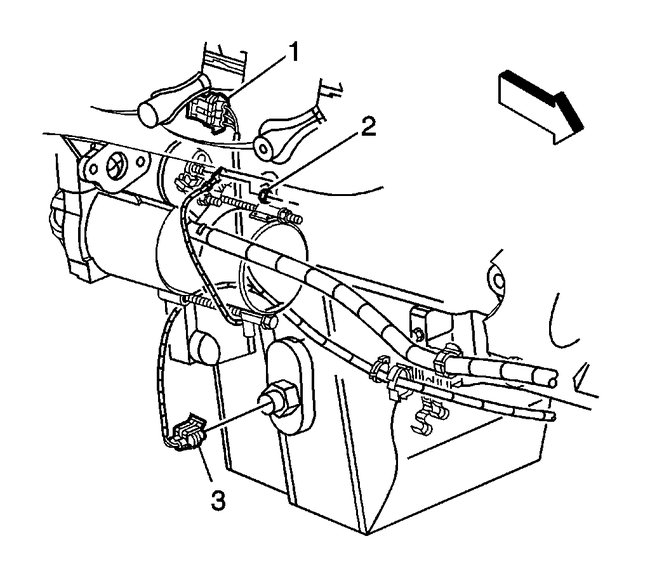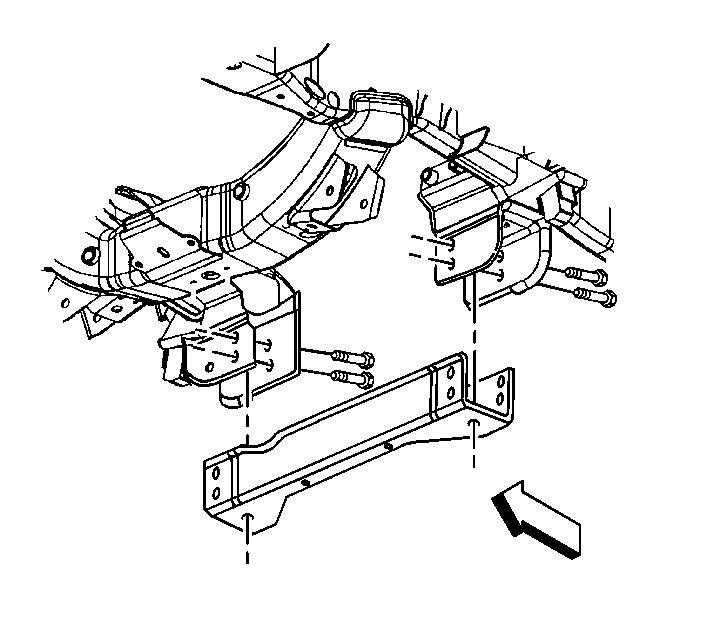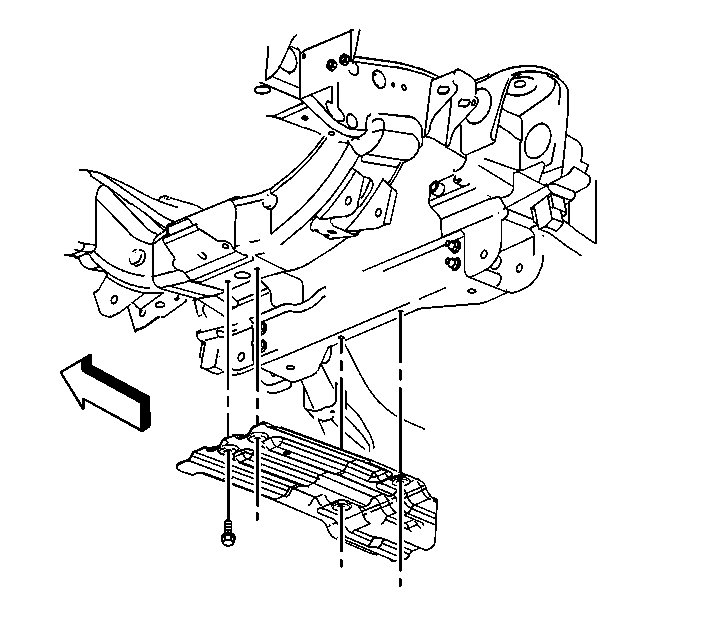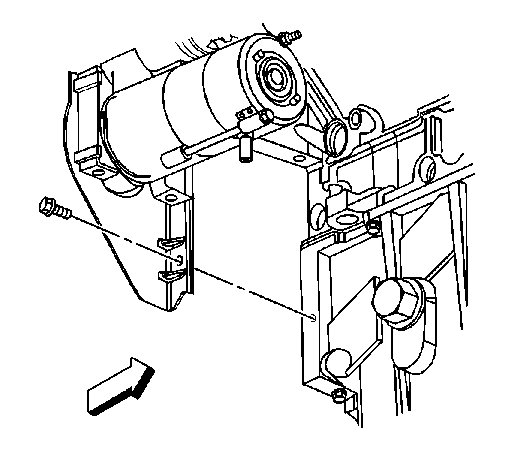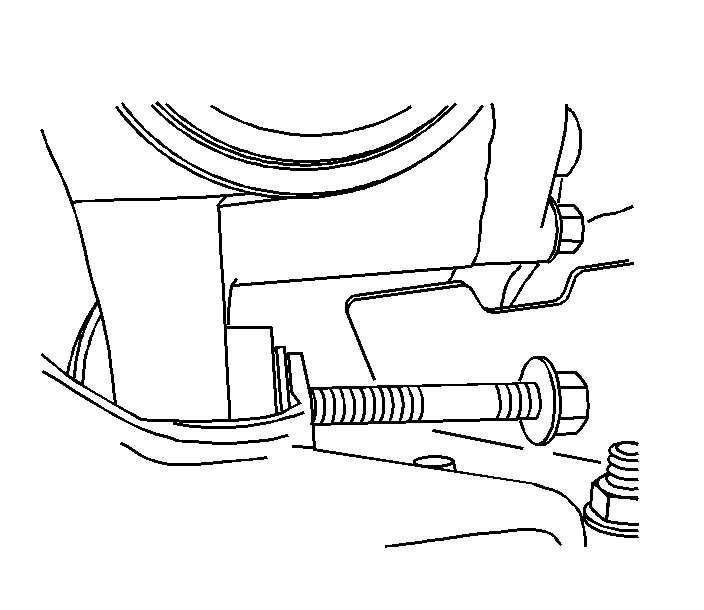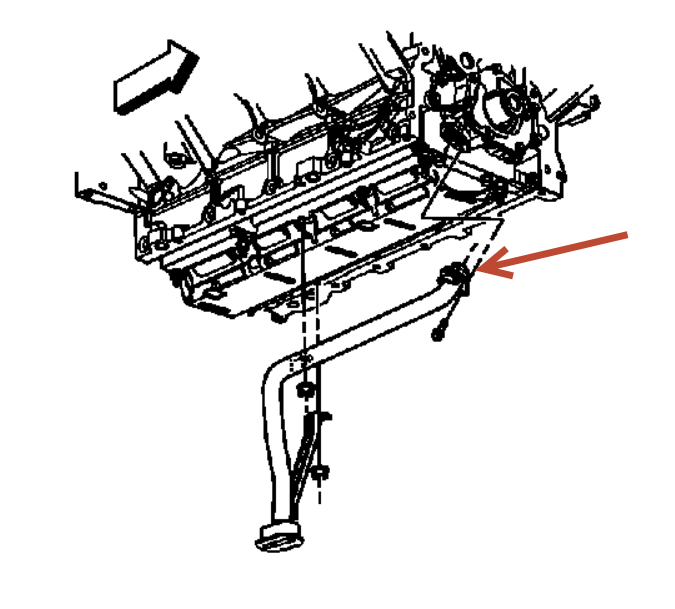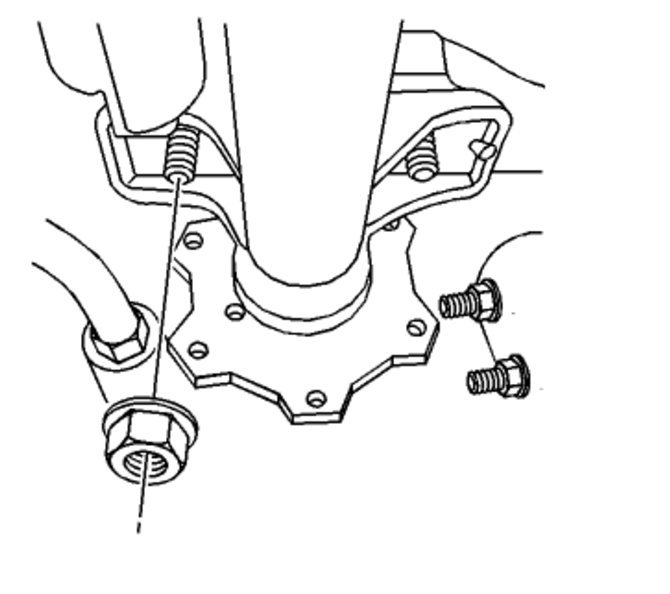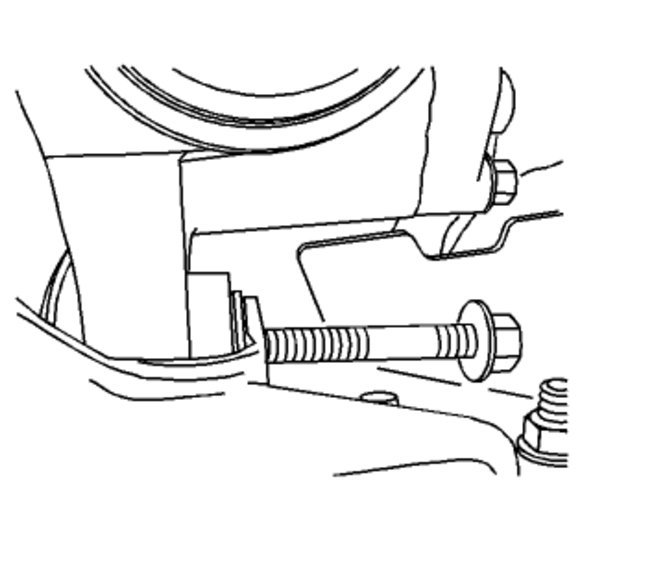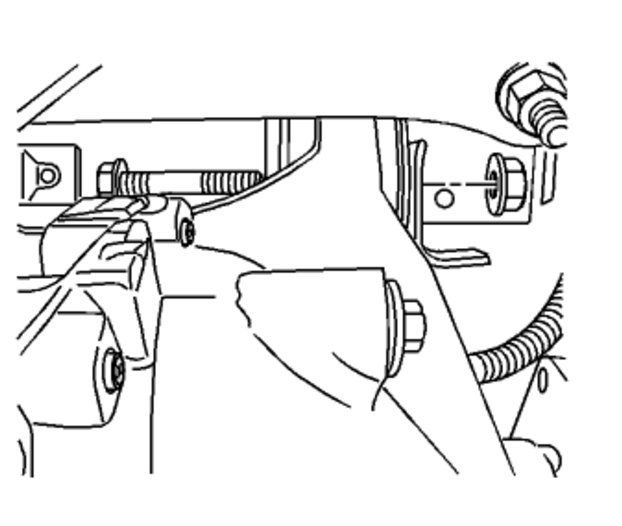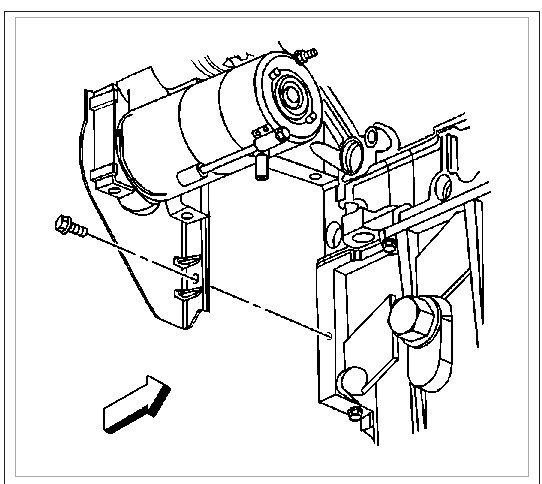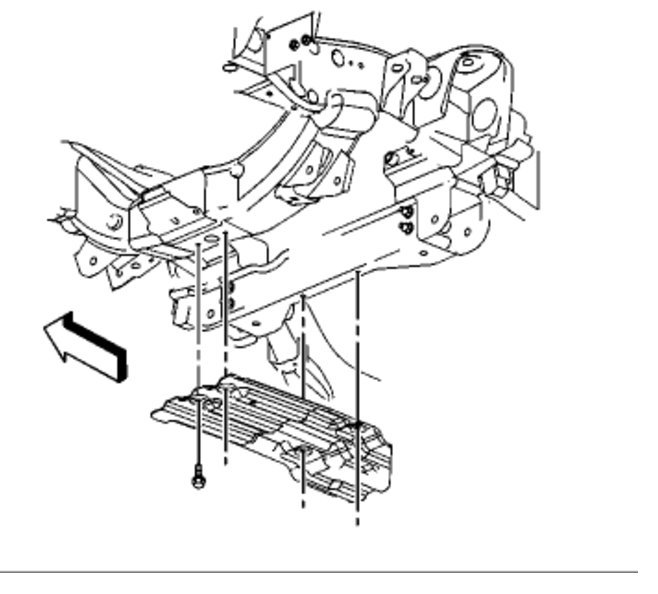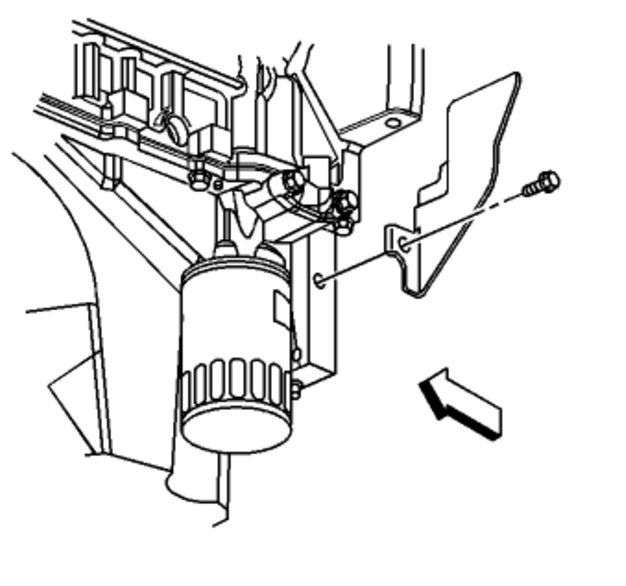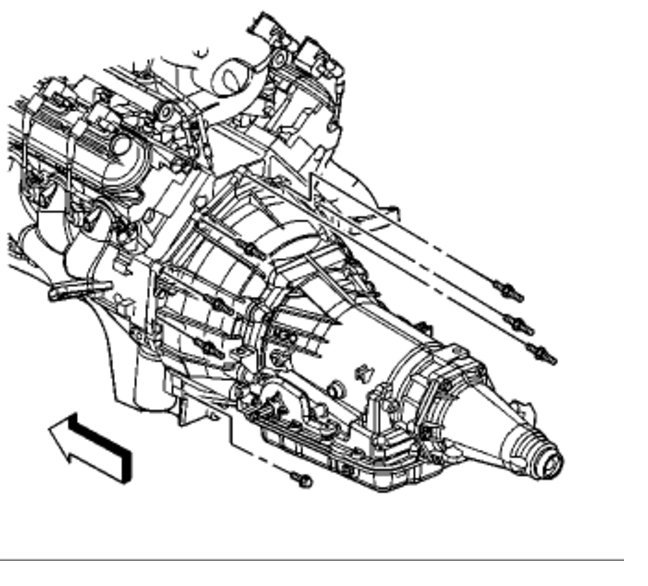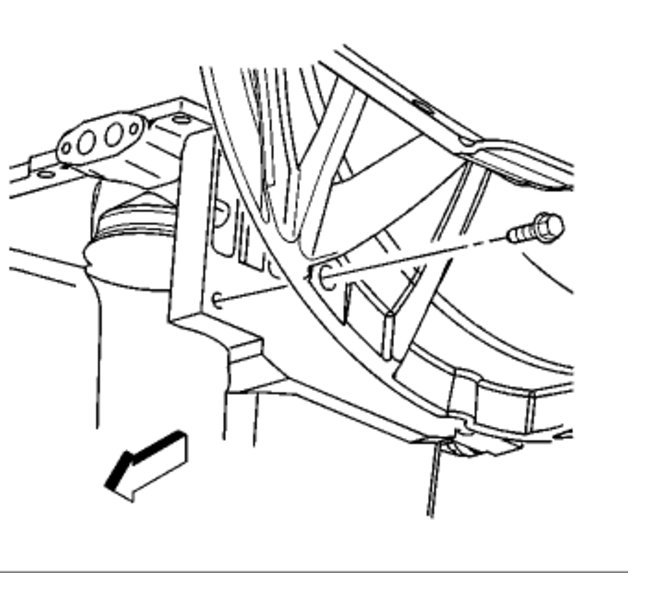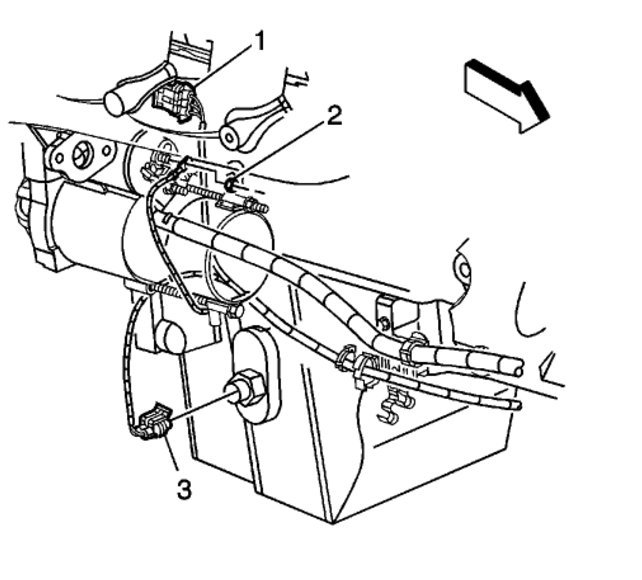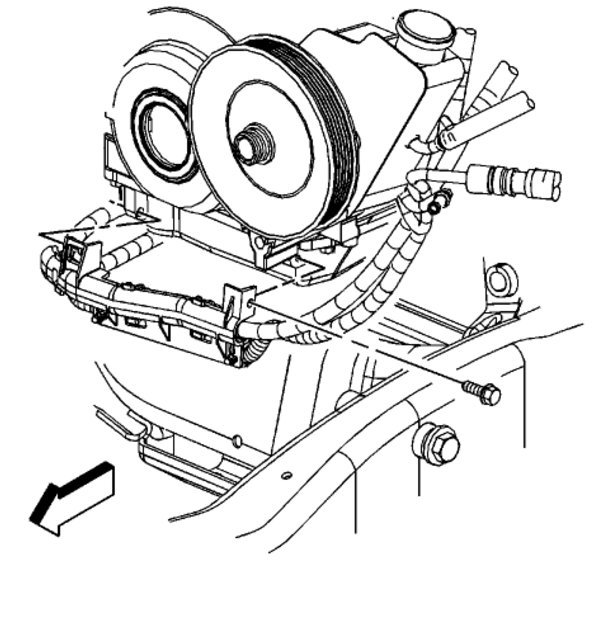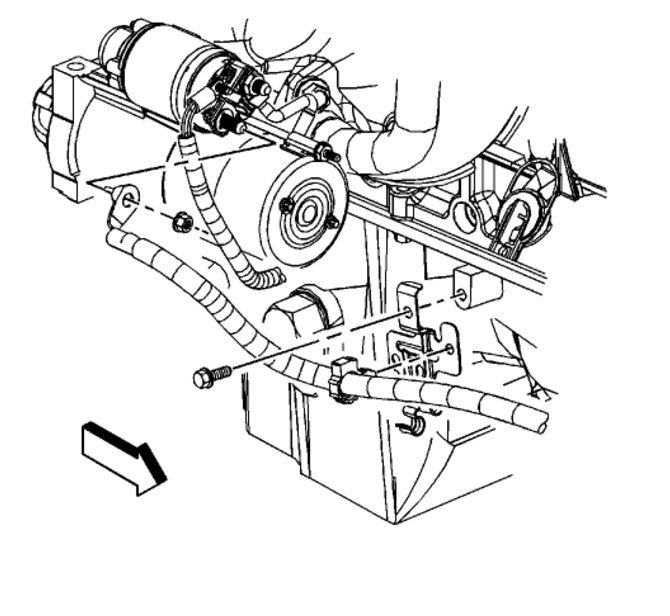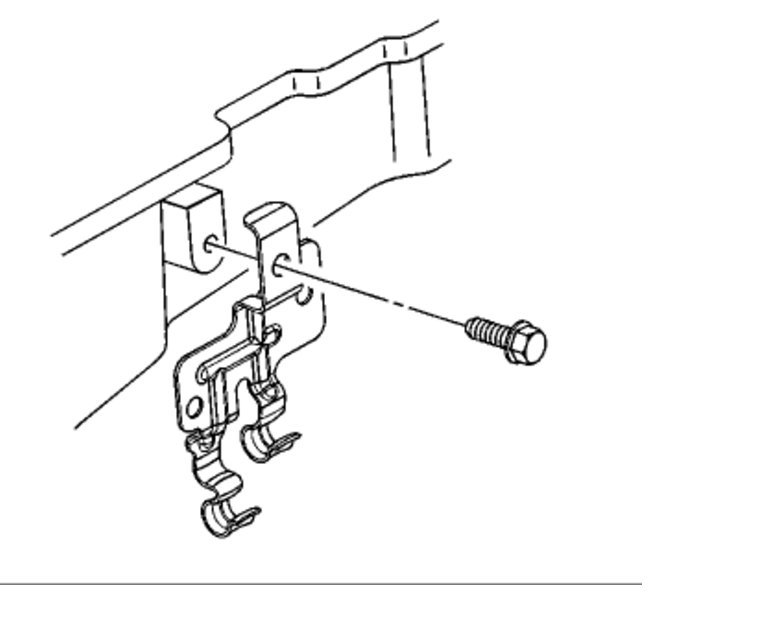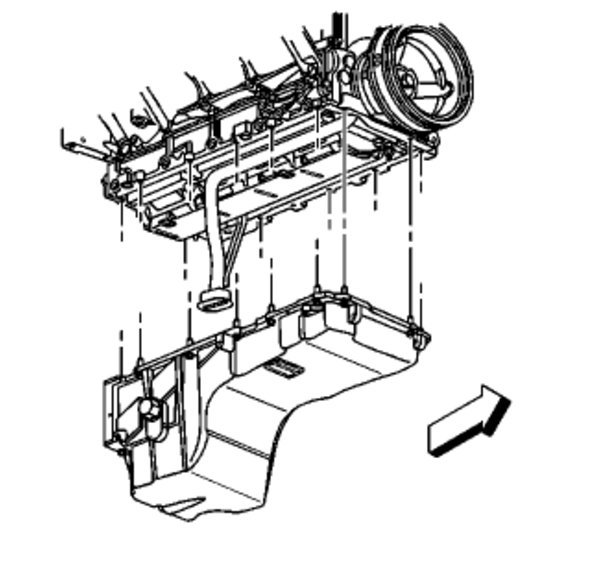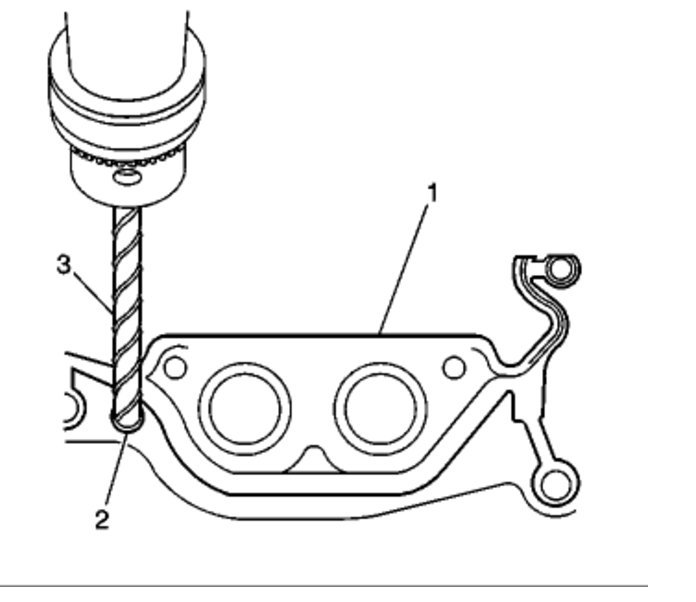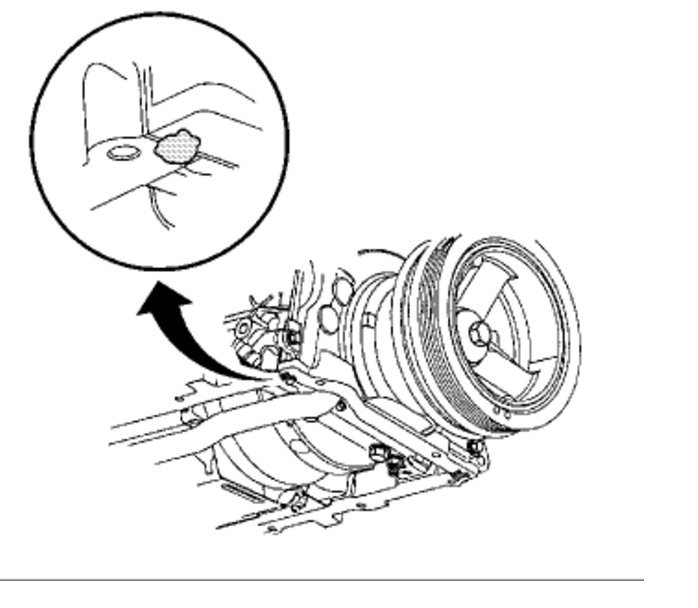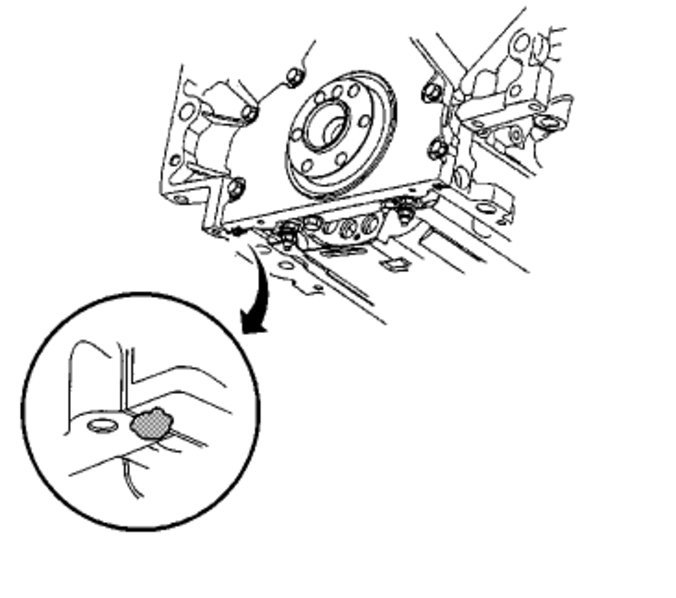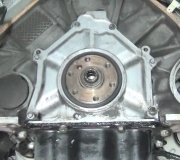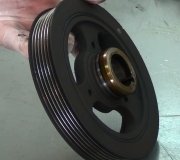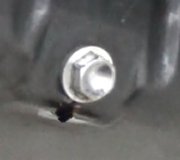Welcome to 2CarPros.
I'm not sure what the symptoms are to help guide you. However, here are the directions for removal and replacement of the pan. The attached pictures correlate with the directions. Also, the directions are for both 2wd and 4wd.
_________________________________________
2005 Chevy Truck Silverado 1500 2WD V8-6.0L VIN U
Oil Pan Replacement
Vehicle Engine, Cooling and Exhaust Engine Engine Lubrication Oil Pan Service and Repair Procedures Oil Pan Replacement
OIL PAN REPLACEMENT
Oil Pan Replacement
Removal Procedure
pic 1
1. If equipped with Four Wheel Drive (4WD), remove the inner axle housing nuts and washers from the bracket.
2. Support the front drive axle with a suitable jack.
Pic 2
3. If equipped with 4WD, remove the differential carrier lower mounting bolt and nut.
Pic 3
4. If equipped with 4WD, remove the differential carrier upper mounting bolt and nut.
5. Lower the front drive axle.
Pic 4
6. Remove the transmission cover bolt.
Pic 5
7. If equipped, remove the oil pan skid plate bolts.
8. Remove the oil pan skid plate.
Pic 6
9. Remove the crossbar bolts.
10. Remove the crossbar.
Pic 7
11. Remove the transmission cover bolt and cover.
12. Drain the engine oil and remove the engine oil filter.
13. Re-install the drain plug and oil filter until snug.
Pic 8
14. If equipped with the 4L60-E automatic transmission, remove the transmission bolt and stud on the right side.
Pic 9
15. Remove the bottom bolt on the left side.
Pic 10
16. If equipped with the 4L80-E automatic transmission, remove the transmission converter cover bolts.
Pic 11
17. Disconnect the oil level sensor electrical connector (3).
Pic 12
18. Remove the battery cable channel bolt.
19. Slide the channel pin out of the oil pan tab.
Pic 13
20. Remove the following from the positive battery cable clip:
Engine wiring harness clip
Positive battery cable clip
pic 14
21. Remove the engine oil cooler lines from the positive battery cable clip.
22. Remove the positive battery cable clip bolt and clip.
Pic 15
23. Remove the oil pan bolts.
24. Remove the oil pan.
Pic 16
25. Important: DO NOT allow foreign material to enter the oil passages of the oil pan, cap or cover the openings as required.
Drill (3) out the oil pan gasket retaining rivets (2), if required.
26. Remove the gasket (1) from the pan.
27. Discard the gasket and rivets.
28. If required, clean and inspect the engine oil pan.
Installation Procedure
Important:
The alignment of the structural oil pan is critical. The rear bolt hole locations of the oil pan provide mounting points for the transmission bellhousing. To ensure the rigidity of the powertrain and correct transmission alignment, it is important that the rear of the block and the rear of the oil pan must NEVER protrude beyond the engine block and transmission bellhousing plane.
Do not reuse the oil pan gasket.
It is not necessary to rivet the NEW gasket to the oil pan.
Pic 17
1. Apply a 5 mm (0.20 inch) bead of sealant GM P/N 12378190, or equivalent 20 mm (0.80 inch) long to the engine block. Apply the sealant directly onto the tabs of the front cover gasket that protrudes into the oil pan surface.
Pic 18
2. Apply a 5 mm (0.20 inch) bead of sealant GM P/N 12378190, or equivalent 20 mm (0.8 inch) long to the engine block. Apply the sealant directly onto the tabs of the rear cover gasket that protrudes into the oil pan surface.
Pic 19
3. Important: Be sure to align the oil gallery passages in the oil pan and engine block properly with the oil pan gasket.
Pre-assemble the oil pan gasket to the pan.
Install the gasket onto the pan.
Install the oil pan bolts to the pan and through the gasket.
4. Install the oil pan, gasket and bolts to the engine block.
5. Tighten the oil pan bolts until snug. Do not overtighten.
Pic 20
6. Install the transmission converter cover bolts until snug, if equipped with the 4L80-E automatic transmission.
Pic 21
7. Install the transmission bolt and stud on the right side until snug, If equipped with the 4L60-E automatic transmission.
Pic 22
8. Notice: Refer to Fastener Notice in Service Precautions.
Install the bottom bolt on the left side until snug.
1. Tighten the oil pan and oil pan-to-oil pan front cover bolts to 25 Nm (18 lb ft).
2. Tighten the oil pan-to-rear cover bolts to 12 Nm (106 lb in).
3. Tighten the bellhousing, converter cover, and transmission bolts/stud to 50 Nm (37 lb ft).
Pic 23
9. Install the positive battery cable clip and bolt to the oil pan.
Tighten the bolt to 9 Nm (80 lb in).
10. Install the engine oil cooler lines to the positive battery cable clip.
Pic 24
11. Install the following to the positive battery cable clip:
Engine wiring harness clip
Positive battery cable clip
pic 25
12. Slide the channel pin in to the oil pan tab.
13. Install the battery cable channel bolt.
Tighten the bolt to 12 Nm (106 lb in).
Pic 26
14. Connect the oil level sensor electrical connector (3).
Pic 27
15. Install the transmission cover and bolt.
Tighten the bolt to 12 Nm (106 lb in).
Pic 28
16. Install the crossbar.
17. Install the crossbar bolts.
Tighten the bolts to 100 Nm (74 lb ft).
Pic 29
18. If equipped, install the oil pan skid plate.
19. Install the oil pan skid plate bolts.
Tighten the bolts to 20 Nm (15 lb ft).
Pic 30
20. Install the transmission cover bolts
Tighten the bolt to 12 Nm (106 lb in).
Pic 31
21. Raise the front drive axle into position.
22. If equipped with 4WD, install the differential carrier upper mounting bolt and nut until snug. Do not tighten at this time.
Pic 32
23. If equipped with 4WD, instal the differential carrier lower mounting bolt and nut.
Tighten the bolts to 100 Nm (75 lb ft).
Pic 33
24. If equipped with 4WD, install the inner axle housing washers and nuts to the bracket.
Tighten the nuts to 100 Nm (75 lb ft).
25. Remove the jack from the front drive axle.
26. Install new engine oil and a new oil filter.
_______________________________
Let me know if this helps.
Take care,
Joe
Images (Click to make bigger)
Saturday, December 12th, 2020 AT 9:15 AM
(Merged)
